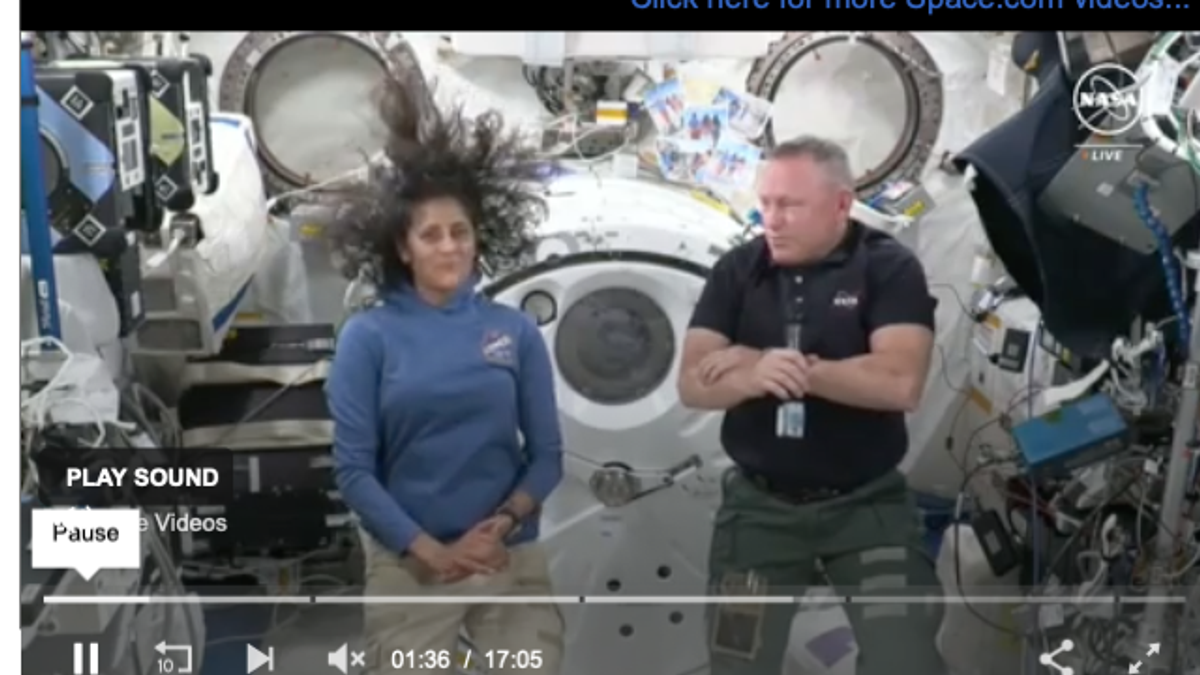
NASA/Boeing May Send SpaceX Crew Dragon to Bring back the Stranded Astronauts
A worrying development in the last few weeks of Stranded Astronauts Ms Sunita Williams and Mr Butch Wilmore at the International Space Station (ISS) is doing rounds both among Aerospace and International communities. They are stranded at the ISS owing to some malfunctions in the newly developed Starliner Crew module of Boeing Aerospace. The module is believed to have significantly exaggerated Helium leaks incapacitating many of its thrusters during its journey to the ISS on 5th Jun 2024. Although very little of information is being given to the public, it is believed that sometime during the trip, there was a grave risk that the module may not be able to dock with the ISS safely BUT they managed it somehow.
Starliner Glitches
Before the launch of the Boeing Starliner Capsule atop Atlas V rocket on 5th Jun 2024, the Helium leakage was noticed much earlier that had once postponed the launch. This leakage however, could not be stopped. Strictly adhering to the safety norms, the leakage should have prompted the designers to check all thrusters and review the design if so required. Some insider experts considered it acceptable for the launch to go ahead that in all probabilities, was a wrong decision. Maybe, there were organizational pressure not to postpone the long-delayed maiden flight any further. Boeing's Starliner in past have suffered numerous glitches that happens in most new HiTech developments. It is only hoped that they all have been resolved through robust solutions and not by cutting corners. If so, more failures will feature in future trips, some very serious too.
Taking a faulty vehicle to space is fraught with dangers esp during orbit but more so during deorbit and re-entry. Stress and strains of space exposure are too much to be ignored. The vacuum of space, extremes of temperatures, acceleration forces of the launch, impacts by meteorites/debris, deceleration and heat of re-entry etc are the worst of the enemies of any faulty system worsening the existing woes. The Starliner with leaking thruster(s) should never have been cleared for the flight esp so when it was the first test crew flight. It is surprising why NASA, a highly professional body, did not review the flightworthiness of Boeings Starliner thoroughly before assigning their astronauts.
The Current Problems
Of the total 28 thrusters, there are 12 main ones meant for major maneuver of the capsule, two each for the plus & minuses in the three cardinal axes. Besides, there are other thrusters too for different purposes, the main among them for de-orbiting. In Boeing Starliner, the de-orbiting process is designed for re-entry in 7 hrs from the undocking at the end of which the service module is decoupled. Till that time, thrusters need to guide the module to the exact re-entry point with precise heading, velocity and sink rate. It is also believed that some other systems to behaved erroneously in this first test flight incl the EVA suits. Although failures and malfunctions in the Test flights are not uncommon, so many of the failures cropping up in the very first flight point out a simple fact that the systems both hardware and software have not been tested and tried adequately incl those under simulated stresses of a space flight.
Serious Connotations & Consequences
If that one thruster showing He-leak before launch has totally become dead by now, there is no reason not to suspect the four additional thrusters that developed leak on the way to docking, also to fail. In fact, these superficial facts question the very design of all similar thrusters. This surely brings in the unreliability of the Capsule propulsion for it to decelerate adequately to de-orbit. Besides, there are likely to be various other issues cropping up in order to maneuver with other axis thrusters (which is a possibility). Clearly, high velocity may delay deorbiting for days, weeks or even months. Crew may not have that much of consumables in the capsule to sustain themselves. A wrong point of re-entry could make the capsule splash down or impact on ground in an unchartered location having additional and higher safety concerns. Similarly, there are different concerns of uncontrolled heading, velocity and sink rates. Any crewed return flight with leaking/disabled thrusters should preferably be avoided. Alternatively, another Crew module of other agency (ie Crew Dragon of SpaceX, Soyuz of Roscosmos or any of the others) may be launched to bring back the astronauts.
Human Space Flights have their own glamour, it may look hunky-dory from outside but there are rather too many variables that may complicate safety of operations. Repeated snags in the Boeing Starliner’s first flight might have prompted the design team to cut some corners thus jeopardizing the safety. Rectifying the hardware of an orbiting space vehicle is an extremely tough task if not impossible. The first and the foremost objective of the agency is to get the human occupants back in a reliable and safe vehicle. They may bring back the faulty valve, if possible, to analyse the failure and initiate appropriate means to get it rectified in the future by a trained crew. Alternately, it could be made to de-orbit and re-entry without crew and retrieved for detailed analysis after splash down. One may also give a thought to bring it back tethered with other vehicle if safety analysis permits it.
The Bottomlines
In a nutshell, it was a wrong decision to launch the Boeing Starliner with known defect. The first task before the team is to get the astronauts back and for this, NASA / Boing must requisition another agency. It can be assumed that Failure Mode, Effects & Criticality Analysis (FMECA) was not undertaken of the entire vehicle with all its systems/sub-systems by an independent third party which is a must. All attempts must be made to retrieve the capsule to undertake full investigation. Any hurry in the next crewed flight must be avoided.
